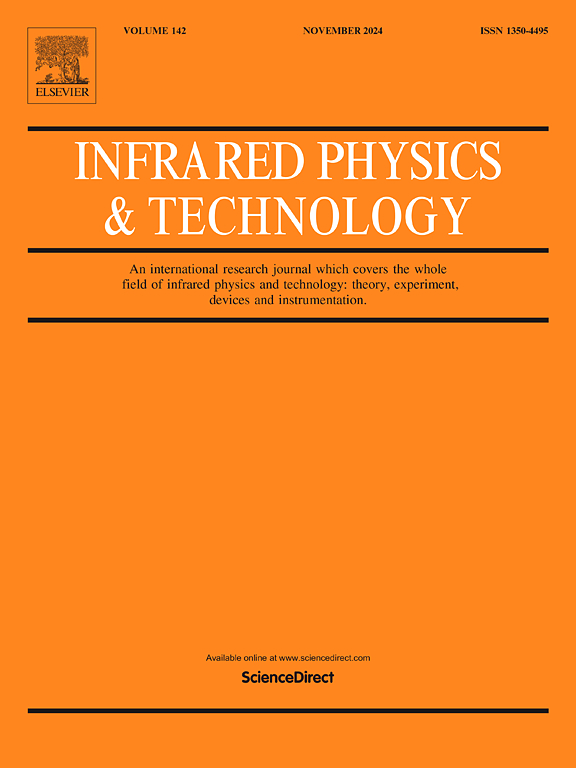Infrared bolometers based on 40-nm-Thick Nano-Thermoelectric silicon membranes
IF 3.1
3区 物理与天体物理
Q2 INSTRUMENTS & INSTRUMENTATION
引用次数: 0
Abstract
State-of the-art infrared photodetectors operating in the mid- and long-wavelength infrared (MWIR and LWIR) are largely dominated by cryogenically cooled quantum sensors when the target is the highest sensitivity and detection speeds. Nano-thermoelectrics provide a route towards competitive uncooled infrared bolometer technology that can obtain high speed and sensitivity, low-power operation, and cost-effectiveness. We demonstrate nano-thermoelectric LWIR bolometers with fast and high-sensitivity response to LWIR around 10 µm. These devices are based on ultra-thin silicon membranes that utilize the dimensional scaling of silicon nanomembranes in thermoelectric elements and are combined with metallic nanomembranes with subwavelength absorber structures. The fast device performance stems from a low heat capacity design where the thermoelectric beams act both as mechanical supports and transducer elements. Furthermore, by scaling down the thickness of the thermoelectric beams the thermal conductivity is reduced owing to enhanced phonon boundary scattering, resulting in increased sensitivity. The nano-thermoelectric LWIR bolometers are based on 40-nm-thick n- and p-type silicon membranes with LWIR (voltage) responsivities up to 1636 V/W and 1350 V/W and time constants in the range of 300–600 µs, resulting in specific detectivities up to 1.56 × 108 cmHz1/2/W. We also investigate the use of a heavily doped N++ substrate to increase optical cavity back reflection, resulting in an increased Si substrate reflectance from 30 % to 70 %–75 % for wavelengths between 8–10 µm, resulting in an increase in device responsivity by approximately 20 %.
求助全文
约1分钟内获得全文
求助全文
来源期刊
CiteScore
5.70
自引率
12.10%
发文量
400
审稿时长
67 days
期刊介绍:
The Journal covers the entire field of infrared physics and technology: theory, experiment, application, devices and instrumentation. Infrared'' is defined as covering the near, mid and far infrared (terahertz) regions from 0.75um (750nm) to 1mm (300GHz.) Submissions in the 300GHz to 100GHz region may be accepted at the editors discretion if their content is relevant to shorter wavelengths. Submissions must be primarily concerned with and directly relevant to this spectral region.
Its core topics can be summarized as the generation, propagation and detection, of infrared radiation; the associated optics, materials and devices; and its use in all fields of science, industry, engineering and medicine.
Infrared techniques occur in many different fields, notably spectroscopy and interferometry; material characterization and processing; atmospheric physics, astronomy and space research. Scientific aspects include lasers, quantum optics, quantum electronics, image processing and semiconductor physics. Some important applications are medical diagnostics and treatment, industrial inspection and environmental monitoring.

 求助内容:
求助内容: 应助结果提醒方式:
应助结果提醒方式:


